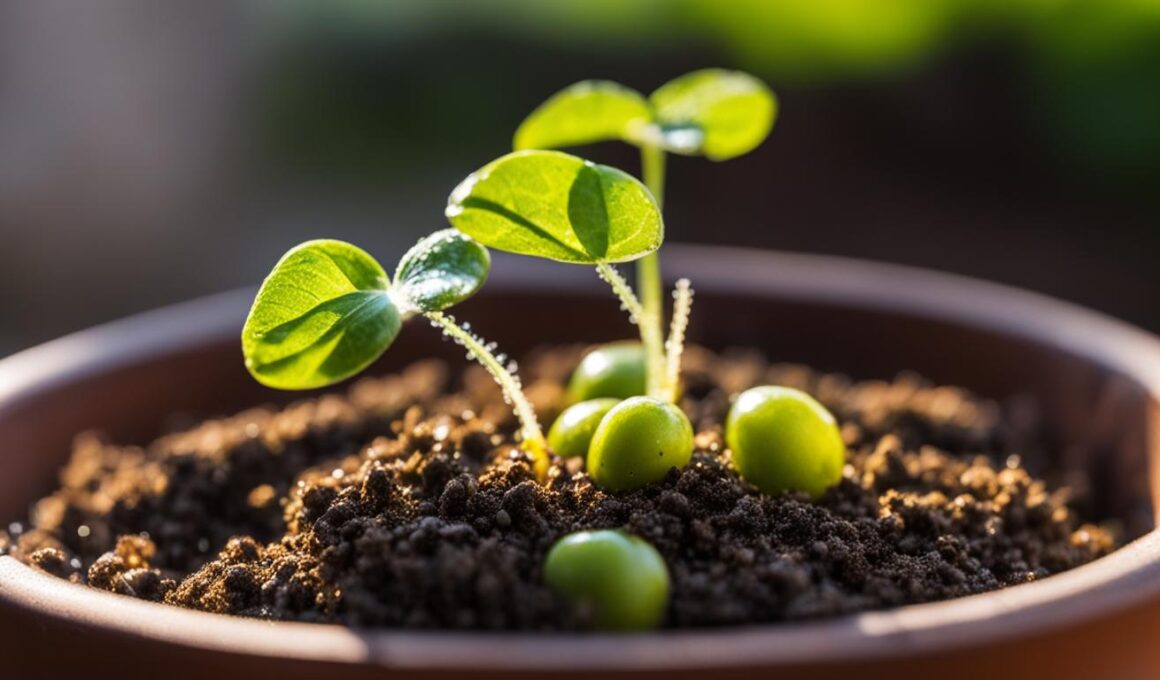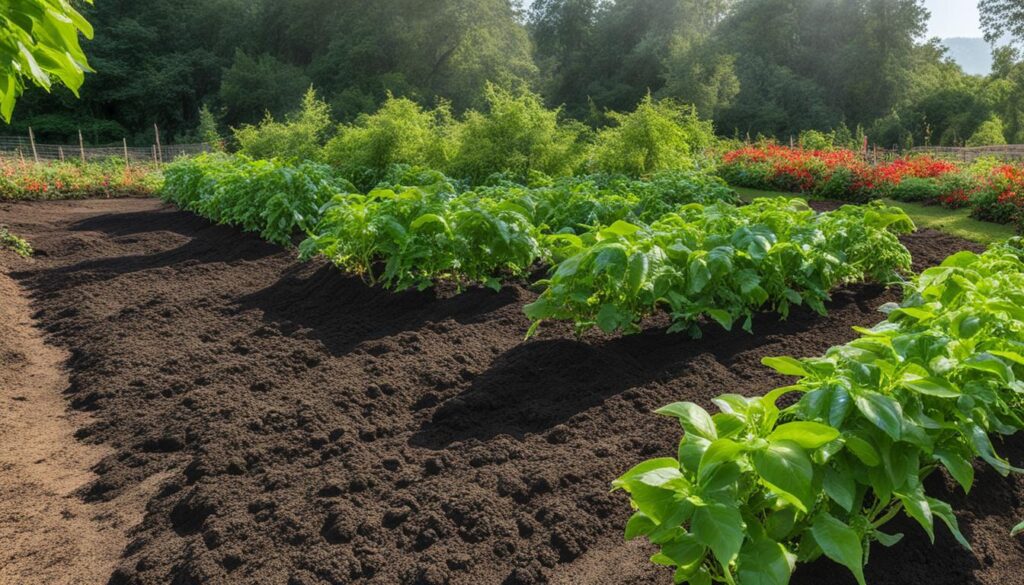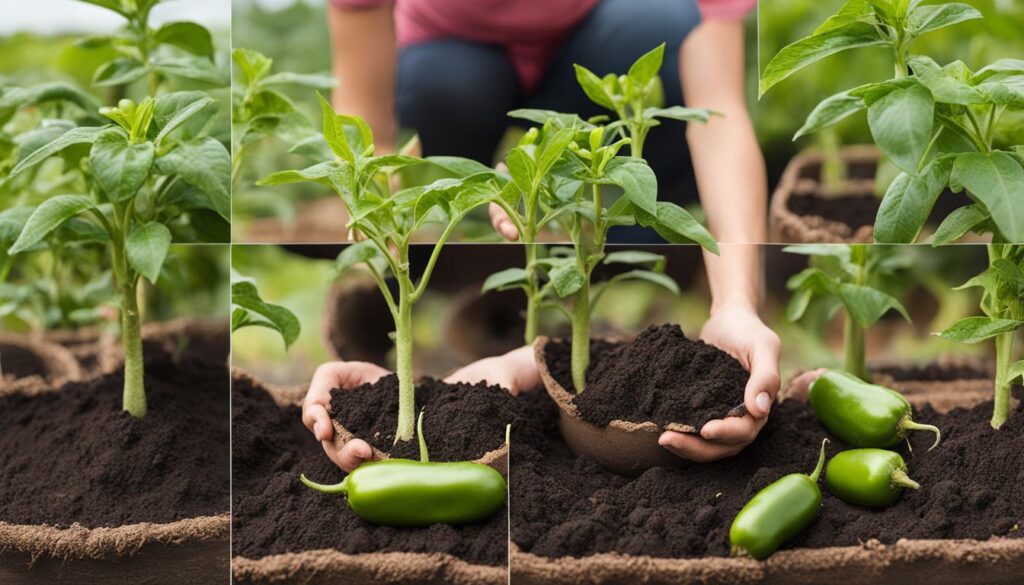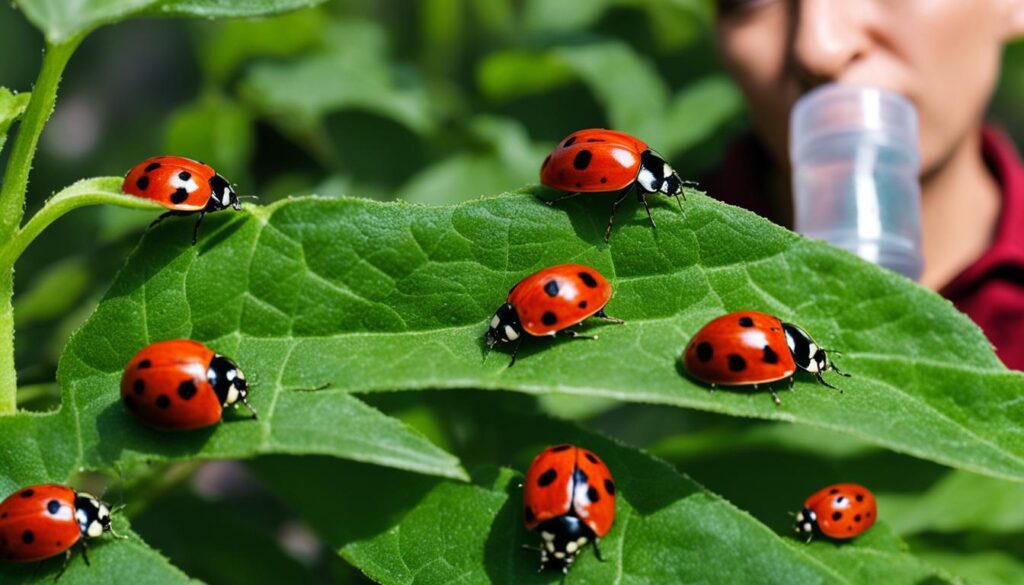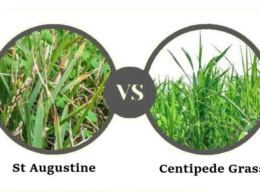Pepino peppers, also known as pepino dulce, are a delicious and versatile fruit that you can easily grow in your own garden. Whether you’re a seasoned gardener or just starting out, this guide will provide you with all the information you need to successfully grow and enjoy pepino peppers.
Pepino peppers are native to South America and thrive in a temperate climate. Their vibrant yellow color and purple stripes make them a visually appealing addition to your garden. Not only are they aesthetically pleasing, but they also have a sweet and juicy taste that is perfect for adding to fruit salads or enjoying on their own.
Key Takeaways:
- Choose a sunny spot with good drainage to plant your pepino peppers.
- Start growing them indoors and transplant them outdoors after the last spring frost.
- Support the plants as they grow by tying them to stakes or trellises.
- Protect the plants from pests and extreme weather conditions.
- Consider overwintering options to ensure their survival in colder regions.
Choosing and Preparing the Planting Location
When it comes to growing pepino peppers, selecting the right planting location is crucial for their success. Here are some key factors to consider.
Sun Exposure:
Pepino peppers thrive in full sun, so choose a spot that receives at least 6-8 hours of direct sunlight each day. This will ensure optimal growth and fruit production. If you have limited sun exposure in your garden, consider planting the peppers in containers or raised beds that can be moved to sunnier areas.
Soil and Drainage:
Pepino peppers prefer well-draining soil with a neutral pH. Before planting, make sure the soil is loose and crumbly to allow proper root development. If your soil doesn’t drain well, you can improve its drainage by adding organic matter, such as compost or aged manure, to the planting area. This will help retain moisture while preventing waterlogging, which can lead to root rot.
Frost Protection:
Pepino peppers are sensitive to frost, so if you live in an area with colder winters, it’s important to provide them with protection. Choose a planting location that offers natural protection, such as a south-facing wall or a sheltered spot in your garden. You can also use frost blankets or row covers to shield the plants from freezing temperatures. Consider planting the peppers in containers that can be moved indoors during the winter months.
Space:
Ensure that you have enough space in your chosen planting location to accommodate the size of the mature pepino pepper plants. They typically require 18-24 inches of spacing between each plant. If you have limited space, consider using trellises or stakes to provide vertical support, allowing you to grow pepino peppers in a smaller footprint.
By carefully selecting and preparing the planting location, you can create the ideal conditions for growing healthy and productive pepino peppers in your garden.
Planting and Caring for Pepino Peppers
Once you have selected the perfect location for your pepino peppers, it’s time to get planting! Follow these steps to ensure your peppers thrive:
Starting Indoors
Start the growing process by planting your pepino pepper seeds indoors, approximately 8-10 weeks before the last spring frost date. This gives them ample time to establish themselves before being transplanted outdoors. Plant the seeds 1/4 inch deep in a fine-textured seed starter or vermiculite with good drainage. It’s important to maintain a soil temperature of 80-90°F to optimize seed germination. You can achieve this by using a heating pad or placing the seed tray in a warm location.
Transplanting Outdoors
Before transplanting your pepper plants outdoors, you’ll need to harden them off. This process involves gradually exposing them to outdoor conditions for about a week. Start by placing them outside in a sheltered spot for a few hours each day, gradually increasing the time and exposure. This helps the plants acclimate to the differences in temperature and sunlight intensity.
Once your pepper plants are ready to be transplanted, choose a well-dug area with added compost or organic matter. Space the plants 18-24 inches apart, giving them enough room to grow and spread out. Remember to water the plants regularly, aiming for consistent moisture in the soil. Mulching can also be beneficial to prevent excessive evaporation during the hot summer months.
Caring for Your Pepino Peppers
In addition to regular watering, there are a few key tips to keep in mind when caring for your pepino peppers:
- Light Feeding: Pepino peppers are considered light feeders, meaning they don’t require excessive fertilization. Use a balanced fertilizer sparingly to avoid excessive foliage growth.
- Supporting the Plants: As your pepino peppers begin to produce fruits, providing support becomes crucial. Tie the plants to stakes or trellises to prevent them from bending or breaking under the weight of the fruits. Opt for materials that won’t constrict the plant’s stem, such as soft ties or twine.
- Protecting from Pests: Keep an eye out for common pests that can affect pepino peppers, such as snails, slugs, and caterpillars. Use organic pest control methods like handpicking or traps to protect your plants and minimize damage.
By following these planting and care tips, you’ll be well on your way to enjoying a bountiful harvest of delicious pepino peppers!
Supporting and Protecting Pepino Peppers
Pepino peppers are a delicious addition to your garden, but they require proper support and protection to ensure healthy growth and abundant harvest. Follow these tips to support and protect your pepino peppers from pests and damage.
Supporting Pepino Peppers
As pepino peppers begin to produce fruits, the weight of the fruits can cause the plants to bend or even break. To prevent this, it is important to provide support for the plants. Use stakes or trellises to support the branches and guide their growth. When tying the plants to the supports, be gentle and avoid using wire twist-ties or twine that may constrict the plant’s stem. Instead, use soft materials like plant ties or cloth strips to secure the branches without causing damage.
Protecting Pepino Peppers from Pests
Pepino peppers can be susceptible to pests such as snails, slugs, and caterpillars. To protect your plants, practice organic pest control methods. Handpick snails and slugs and remove them from the garden. You can also create traps using beer or shallow dishes of soapy water to attract and trap these pests. For caterpillars, inspect the plants regularly and remove any caterpillars you find by hand. By diligently monitoring and taking action against pests, you can keep your pepino pepper plants healthy and productive.
Protecting Pepino Peppers from Damage
In addition to pests, pepino pepper plants can be vulnerable to damage from extreme weather conditions, such as strong winds or heavy rain. To protect your plants, create a barrier or windbreak around them to shield them from strong winds. If heavy rain is forecasted, consider covering the plants temporarily with a tarp or plastic sheeting to prevent damage from excessive moisture. By taking these precautions, you can ensure that your pepino pepper plants remain strong and healthy, even in challenging weather conditions.
| Supporting and Protecting Pepino Peppers | Benefits |
|---|---|
| Providing support | – Prevents bending or breaking of plants – Guides growth and prevents sprawling – Supports heavy fruit-bearing branches |
| Protecting from pests | – Prevents damage from snails, slugs, and caterpillars – Preserves plant health and productivity – Reduces the need for chemical pesticides |
| Shielding from damage | – Protects against strong winds and heavy rain – Prevents physical damage to plants – Ensures plant survival and continued growth |
By providing support and protection, you can ensure the success of your pepino pepper plants and enjoy a bountiful harvest of these flavorful peppers.
Overwintering Pepino Peppers
While pepino peppers are tropical plants that cannot survive cold winters outdoors, there are several overwintering options available to ensure their survival and provide a head start for the next growing season.
If you live in an area with milder winters, you can keep your pepino peppers in a protected area of your garden. Choose a spot that receives ample sunlight and cover the plants with plastic or a frost blanket to warm up the soil and protect against frost.
For those in colder regions, it is recommended to bring the pepino pepper plants indoors or store them in a heated greenhouse. This ensures that the plants are shielded from the harsh winter conditions and maintain a favorable temperature for growth. Place the potted plants in a sunny location near a window or provide supplemental grow lights to ensure they receive sufficient light.
During the winter months, it is important to monitor the moisture levels in the soil and water the plants as needed. Be cautious not to overwater, as this can lead to root rot. Additionally, keep an eye out for pests that may affect the plants, such as spider mites or aphids, and take appropriate measures to control them.
| Overwintering Options for Pepino Peppers | Advantages | Disadvantages |
|---|---|---|
| Indoor Overwintering | Protection from frost and extreme weather conditions | Requires adequate indoor space and supplemental lighting |
| Heated Greenhouse | Provides a controlled environment with optimal temperature and protection | Requires access to a greenhouse and additional heating costs |
| Protected Outdoor Area | Less reliance on artificial lighting and heating | May not provide adequate protection in extremely cold regions |
How Can I Grow and Enjoy Pepino Peppers?
Pepino peppers are easy to grow and offer a burst of flavor pepino pepper that adds a unique twist to your dishes. To enjoy them, plant in well-drained soil with ample sunlight. Keep the plants watered and watch them flourish. Once ripe, add these flavorful peppers to your favorite recipes for a delicious kick.
Conclusion
Growing and enjoying pepino peppers can be a rewarding experience. With the right conditions and care, these versatile and flavorful peppers can thrive in your home garden. Final thoughts on growing pepino peppers:
Choose a sunny and well-drained location:
Select a spot that receives at least 6-8 hours of full sun per day. Ensure the soil has good drainage to prevent waterlogging and promote healthy growth. Incorporating organic matter or compost can improve the moisture retention of the soil.
Provide support for your plants:
As the pepper plants grow and produce fruits, they may require support to prevent bending or breaking. Use stakes or trellises to provide adequate support, and be sure to tie the plants gently using plant-friendly materials to avoid damaging the stem.
Protect your plants from pests and extreme weather conditions:
Pepino peppers can be susceptible to common pests such as snails, slugs, and caterpillars. Use organic pest control methods like handpicking or traps to keep these pests at bay. Additionally, shield your plants from strong winds, heavy rain, or frost by providing overhead coverage or bringing them indoors during unfavorable weather.
Whether you have limited space or a large garden, pepino peppers can be grown in containers or raised beds. These options provide flexibility and convenience for urban gardeners or those with less gardening area. Don’t let colder winters discourage you; consider overwintering options like bringing your plants indoors or storing them in a heated greenhouse to ensure their survival.
So, try your hand at growing pepino peppers and enjoy the fresh, juicy taste of homegrown goodness. With the tips and techniques outlined in this guide, you’re well on your way to becoming a successful pepino pepper gardener!
FAQ
What is a pepino pepper?
A pepino pepper, also known as pepino dulce, is a perennial fruiting bush native to South America.
How do I grow pepino peppers?
Pepino peppers can be grown from seeds or cuttings in a sunny spot with good drainage and a soil temperature of around 65°F.
When is the best time to start growing pepino peppers?
Start growing pepino peppers indoors 8-10 weeks before the last spring frost date.
How do I care for pepino peppers?
Water the plants regularly, provide support to prevent bending or breaking, and protect them from pests and extreme weather conditions.
Can pepino peppers be grown in containers?
Yes, pepino peppers can be grown in containers or raised beds if you have limited space.
How can I overwinter pepino peppers?
Pepino peppers can be overwintered indoors or in a heated greenhouse in colder regions.
Are there any pests I should watch out for when growing pepino peppers?
Yes, pepino peppers can be susceptible to pests such as snails, slugs, and caterpillars. Use organic pest control methods to protect the plants.
What do pepino peppers taste like?
Pepino peppers have a fresh and juicy taste, resembling a mix of melon and pear.





